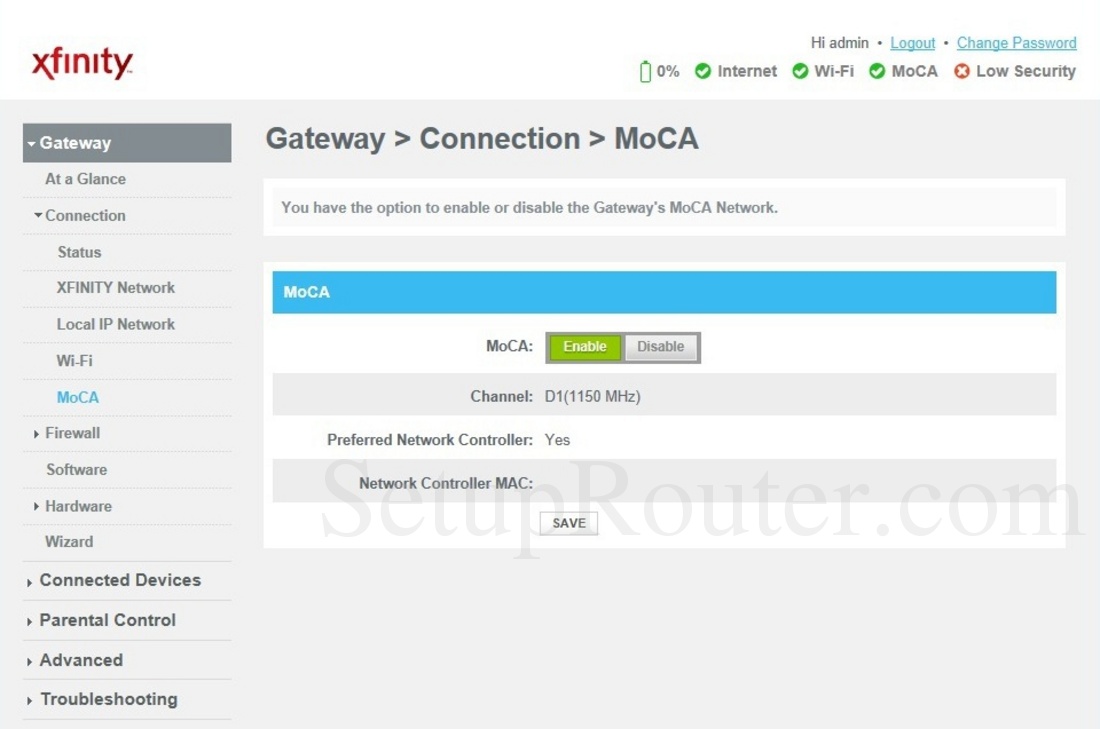

WPA3 uses the Dragonfly Key Exchange system so it is resistant to dictionary attacks.
#TIVO MOCA WEP VS WPA CRACKED#
In fact, alphanumeric passwords up to 16 characters can be cracked fairly quickly for WPA2 networks.
#TIVO MOCA WEP VS WPA PASSWORD#
This means that if the password is weak, it is easily breakable.
#TIVO MOCA WEP VS WPA OFFLINE#
This captured traffic can then be used offline in a dictionary-based attack to guess the password. The attacker can sniff and capture the 4-way handshake of a WPA2-based initial connection when in proximity of the network. The advantages of Dragonfly key exchange are forward secrecy and resistance to offline decryption.Ī vulnerability of the WPA2 protocol is that the attacker does not have to stay connected to the network in order to guess the password.

The technical details on how WPA3 uses the Dragonfly key exchange-which itself is a variation of SPEKE (Simple Password Exponential Key Exchange)-are described in this video.

WPA3 fixes this vulnerability and mitigates other problems by using a different handshake mechanism for authenticating to a Wi-Fi network- Simultaneous Authentication of Equals, also known as Dragonfly Key Exchange. There are even how-to guides for hacking WPA2-PSK passwords. Essentially, to guarantee security, a key should only be installed and used once.Įven with updates to WPA2 to mitigate against KRACK vulnerabilities, WPA2-PSK can still be cracked. replay counter) are reset to their initial value. When the victim reinstalls the key, associated parameters such as the incremental transmit packet number (i.e. This is achieved by manipulating and replaying cryptographic handshake messages. In a key reinstallation attack, the adversary tricks a victim into reinstalling an already-in-use key. In WPA2, this part of the protocol was vulnerable to KRACK attacks: When a device tries to log on to a password-protected Wi-Fi network, the steps of supplying and verifying the password are taken via a 4-way handshake. New Handshake: Simultaneous Authentication of Equals (SAE) WPA3 mandates use of Protected Management Frames (PMF) Older routers with unpatched firmware may not support PMF. WPA2 mandates support of PMF since early 2018. Yes, WPA3 is more secure than WPA2 in ways discussed in the essay below. WPA2 is recommended over WEP and WPA, and is more secure when Wi-Fi Protected Setup (WPS) is disabled. WPA3 also replaces the Pre-Shared Key (PSK) exchange with Simultaneous Authentication of Equals, a more secure way to do initial key exchange. CCMP replaces WPA's TKIP.ġ28-bit encryption in WPA3-Personal mode (192-bit in WPA3-Enterprise) and forward secrecy. Unlike WEP and WPA, WPA2 uses the AES standard instead of the RC4 stream cipher.

It protects against weak passwords that can be cracked relatively easily via guessing. Released in 2018, WPA3 is the next generation of WPA and has better security features. The final specification only mandates the new handshake but some manufacturers will implement the other features as well.Ĭomparison chart WPA2 versus WPA3 comparison chartĪ security protocol developed by the Wi-Fi Alliance in 2004 for use in securing wireless networks designed to replace the WEP and WPA protocols. When the Wi-Fi alliance announced technical details for WPA3 in early 2018, their press release touted four major features: a new, more secure handshake for establishing connections, an easy method to securely add new devices to a network, some basic protection when using open hotspots, and finally increased key sizes. WPA3 makes further security improvements that make it harder to break into networks by guessing passwords it also makes it impossible to decrypt data captured in the past i.e., before the key (password) was cracked. As we described in the comparison of WPA2 with WPA, WPA2 has been the recommended way to secure your wireless network since 2004 because it is more secure than WEP and WPA. Released in 2018, WPA3 is an updated and more secure version of the Wi-Fi Protected Access protocol to secure wireless networks. Diffen › Technology › Telecommunications › Computer Networking


 0 kommentar(er)
0 kommentar(er)
